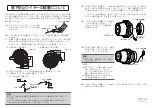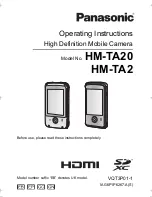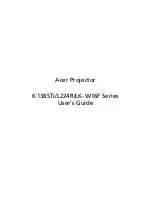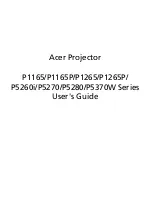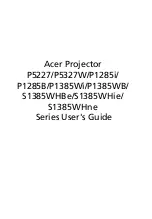
129
Notes on the Power Supply
h
Use only nickel-metal hydride (Ni-MH) batteries with
this camera. AA size alkaline, AA-size manganese or
lithium batteries cannot be used.
Incorrect use of the batteries could cause them to leak,
become hot, ignite or burst. Always observe the
precautions given below.
h
Do not heat the batteries or throw them into a fire.
h
Do not carry or store the batteries with metal objects
such as necklaces or hairpins that could come into
contact with the metal positive
≠
and negative
–
poles
of the battery.
h
Do not expose the batteries to fresh or sea water, and
take particular care to keep the terminals dry.
h
Do not attempt to deform, disassemble or modify the
batteries.
h
Do not attempt to peel off or cut the battery casing.
h
Do not drop, strike or otherwise subject the batteries to
strong impacts.
h
Do not use the batteries that are leaking, deformed,
discolored or exhibit any other obvious abnormality.
h
Do not store the batteries in very warm or moist
locations.
h
Keep the batteries out of reach of infant and young
children.
h
When loading the batteries into the camera, ensure that
the battery polarity (
≠
and
–
) is as indicated on the
camera.
h
Do not use new batteries together with used batteries.
In the case of rechargeable batteries, do not use
charged and discharged batteries together. Do not use
batteries of different types or brands together.
h
If you do not intend to use the camera for a long
period of time, remove the batteries from the camera
(Note that if the camera is left with the batteries
removed, the time and date settings are cleared).
h
The batteries may feel warm immediately after being
used. Before removing the batteries, switch the
camera off and wait until the batteries cool down.
h
When replacing the batteries, always fit 4 new
batteries.
Here, ‘new batteries’ refers to Ni-MH (nickel metal
hydride) batteries that have recently been fully
recharged together.
h
In cold locations (at temperatures of +10°C/+50°F or
below), battery performance deteriorates and the time
for which they can be used shortens markedly. In cold
conditions, put the batteries in your pocket or a similar
place to warm them before loading them into the
camera. If you use a body warmer to warm the
batteries, ensure that they are not in direct contact
with the warmer.
h
Soil (such as fingerprints) on the battery terminals can
markedly reduce the number of available shots.
Carefully wipe the battery terminals clean with a soft
dry cloth before loading the batteries.
If any liquid at all leaks from the batteries, wipe the
battery compartment thoroughly and then load new
batteries.
If any battery fluid comes into contact with your
hands or clothing, flush the area thoroughly with
water. Note that battery fluid can cause loss of
eyesight if it gets into your eyes. If this occurs, do
not rub your eyes. Flush the fluid out with clean
water and contact your physician for treatment.
■
Disposing of Batteries
When disposing of batteries, do so in accordance with your
local waste disposal regulations.
h
As a power source in digital cameras, AA-size Ni-MH
batteries are superior to alkaline batteries in several
ways, such as allowing more shots to be taken with
the camera. However, care must be taken with the
way Ni-MH batteries are used if their original
performance is to be maintained.
h
Ni-MH batteries left unused in storage for long periods
can become “deactivated”. Also, repeatedly charging
Ni-MH batteries that are only partially discharged can
cause them to suffer from the “memory effect”.
Ni-MH batteries that are “deactivated” or affected by
“memory” suffer from the problem of only providing
power for a short time after being charged. To prevent
this problem, discharge and recharge them several
times using the camera’s “Discharging rechargeable
batteries” function. By repeating this cycle several
times, the temporary reduction in performance caused
by “memory” or “deactivation” can be remedied and
the batteries can be restored to their original
performance levels.
Deactivation and memory are specific to Ni-MH
batteries and are not in fact battery faults. See P.107
for the procedure for “Discharging rechargeable
batteries”.
h
To charge Ni-MH batteries, use the battery charger
(included). Refer to P.21 to make sure that the charger
is used correctly.
h
Do not use the battery charger to charge other
batteries.
h
Note that the batteries feel warm after being charged.
h
Due to the way the camera is constructed, a small
amount of current is used even when the camera is
turned off. Note in particular that leaving AA-size Ni-
MH batteries in the camera for a long period will
overdischarge the batteries and may render them
unusable even after recharging.
h
Ni-MH batteries will self-discharge even when not
used, and the time for which they can be used may be
shortened as a result.
h
Ni-MH batteries will deteriorate rapidly if
overdischarged (e.g. by discharging the batteries in a
flashlight). Use the “Discharging rechargeable
batteries” function provided in the camera to discharge
the batteries.
h
Ni-MH batteries have a limited service life. If a battery
can only be used for a short time even after repeated
discharge-charge cycles, it may have reached the end
of its service life.
Notes on the Batteries
128
If this does not remove the soiling, repeat steps
3
to
5
with a new Sensor swab or contact an
authorized FUJIFILM dealer.
Always use this procedure to clean the CCD. Never clean the CCD in bulb photography mode.
A current runs through the CCD in bulb photography mode and cleaning could cause damage.
●
!
Do not use the swab when it is dry or not moistened with
cleaning fluid.
●
!
When you turn the camera off, the mirror drops down and the
shutter closes at the same time. Take care to ensure that
your fingers are not caught inside the camera.
◆
Ensure that you have the cleaning equipment ready
◆
h
Cleaning swabs
Sensor Swab (Photographic Solutions, Inc.)
✽
For information on suppliers outside Japan, visit the web site listed below
(http://www.photosol.com/swabproduct.htm).
h
Cleaning fluid
Anhydrous ethanol, EE Cleaner (Olympus)
3
Moisten the bottom 5 mm (0.2 in) of the Sensor
swab evenly with cleaning fluid.
4
Slowly and gently wipe one side of the swab just
once across the full width of the CCD from left to
right.
5
Then wipe the other side of the Sensor swab across the full width of the CCD from left to right
once more. Do not reuse Sensor swabs.
6
Turn the camera off and mount the lens or body
cap on the camera.
Cleaning the CCD
Applicable Batteries
Using the AA-size Ni-MH Batteries
























